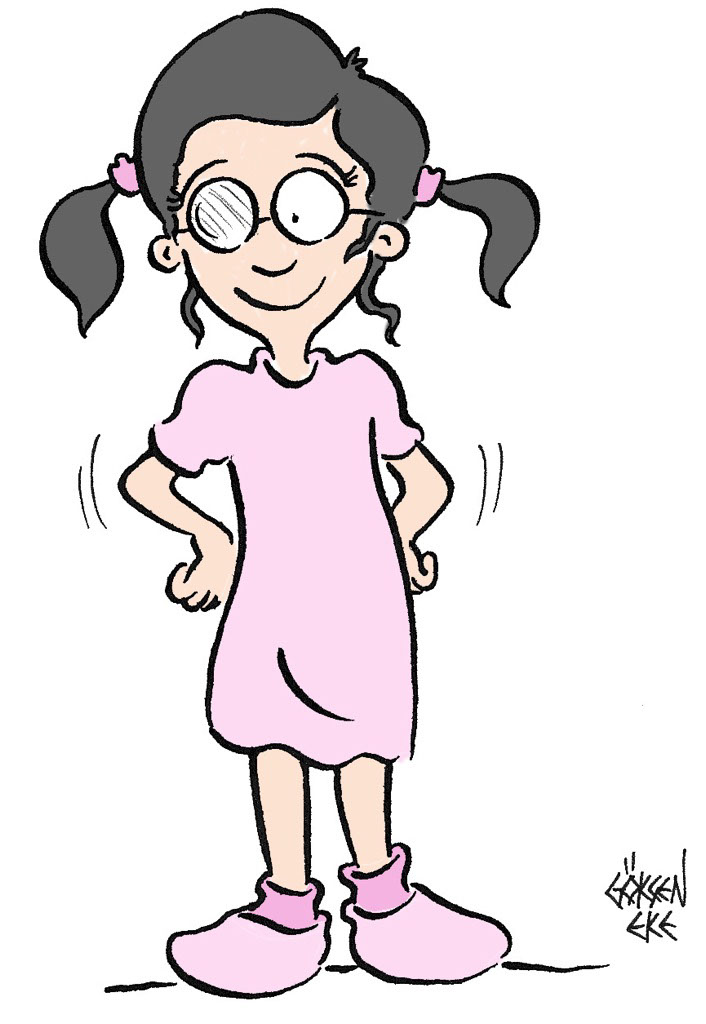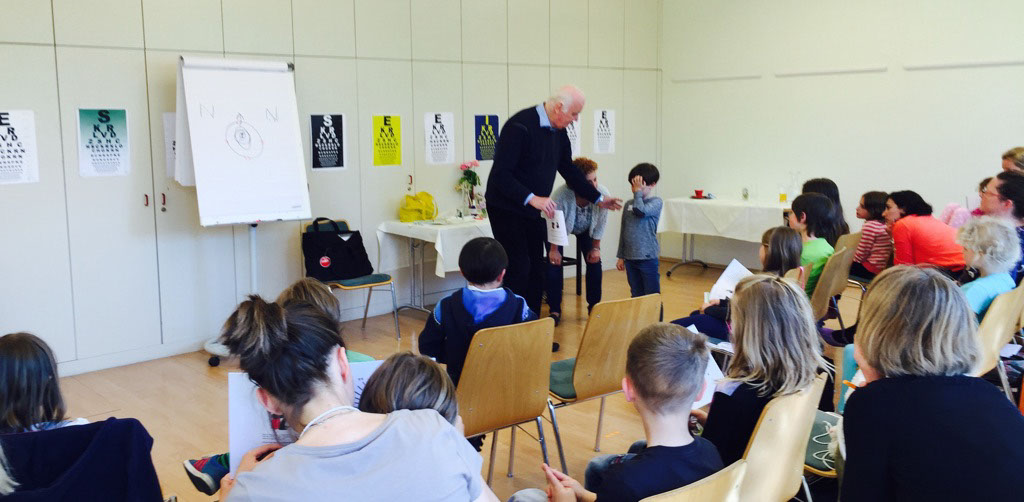What can be done about lazy eye? It's actually trainable.
This problem develops so slowly that you don’t notice that you are using only one eye. Parents are usually the first to notice that the child keep turning the head and favours one eye. The brain has simply decided that it is easier to use only one eye and the other eye is neglected due to disuse and becomes “Lazy.” The medical term for “Lazy eye” is Amblyopia. Wandering eye or Strabismus is the most common cause of Amblyopia. It can also develop if there is a big difference in visual acuity between the two eyes also referred to as Refractive Amblyopia. In most cases there is nothing physically wrong with the eye. Amblyopia afflict between 2% (the low estimate) and 8.3% of the population. The American National Society to Prevent Blindness estimates that there are 127,000 new cases of Amblyopia every year.
The preferred medical treatment is to use eye-patches to cover the good eye - it’s called penalization. The idea is to force the “Lazy eye” to work. However, most parents find it very difficult to keep an eye patch on their four year old. Imagine that your parents limited your vision so you could barely see your food. This is incomprehensible for a small child that in most cases has perfect vision in the good eye. In some cases doctors even put drugs into the good eye so it can’t see very well and this may go on for weeks, months even years. Unfortunately the results are minimal. However, the emotional costs are high for child as well as parents who have to enforce the procedure. Some doctors believe that it is critical to start patching before the age of 6 and parents are consequently put under a lot of pressure to agree to the patching procedure. The belief is that children’s eyes stop developing after age 6 or 7. However, recent Vision training research show that Amblyopia can be treated successfully at any age.

There are two main types of Amblyopia, one is when the “Lazy” eye is more nearsighted than the other. The other is when the “Lazy” eye is more farsighted. There are different degrees of this. For example, some doctors will created with laser surgery one eye for reading (nearsighted) and the other eye for driving (far sighted). This is called Mono-vision. When the is just a minor difference between the two eyes it is called Anisometropia.
If the “Lazy” eye is more nearsighted we need to treat the nearsightedness to make the vision the same in both eyes. One case in Singapore where Rene started out with -13.00 diopters in her “Lazy” eye and -8.00 diopters in the other eye. So there was a difference of -5.00 diopters between her two eyes. Even with glasses she was only using one eye.
With diligent exercising in one and a half year Rene was able to equalise both hers eyes so they were -8.00. She now had the same vision in both eyes and was no longer Amblyopic. Rene have since continued her exercises and now wear -4.00 in both eyes after another one and a half years of exercises.
Shara, a shy seven year old had a lot of problems with her left eye. A cataract had developed when she was five. Her mother took her to see a lot of eye doctors and eventually the lens was surgically remove from her left eye. Since Shara was only five years old at the time no artificial lens was implanted. The left eye became “Lazy” because Shara only used her perfect right eye. The doctors told her that there was nothing that could be done about this.
In fact Shara had completely given up on her “bad” eye. However, her mother was certain that there was a way. So she enrolled Shara in a Magic eyes vision training class conducted by Leo Angart.
Initially Shara did not respond to any of the exercises. She had clear eyesight (perfect 20/20) in her right eye and was of course using that all the time. The other children in the workshop were doing an exercise using eye-charts.
In a moment of inspiration, Leo took down one of the charts and asked her to look at the large “E” about 20 cm from her left eye. She could recognize the “E.” Shara was astonished and tears started to weel up in her eyes. Then he asked to relax her eyes by rubbing her hand and cover her eyes with her warm hands. Soon she was able to see the 20/200 and even the 20/160 line from 20 cm. This was a tremendous experience for her and her mother because she now realized that her eye would respond to vision training. Her left eye was not dead – it worked.
The next day, after many short exercises, her eye was able to see even smaller letters. However, most important was the way her eye looked. It had more life and was beginning to track together with the dominant right eye. Leo Angart told Shara and her mother that they probably needed to do Vision Training exercises for a long time, perhaps for years. The good news is that Shara now believe that it’s possible. After all cataract removal does not affect the retina – the part that actually see. Shara’s mother said that she has always had the feeling that something could be done for her daughter’s eye. “I am so thankful that we went to the Magic eyes workshop. I learned how I can help restore my beautiful girls eyesight.”
Research shows that Vision training can restore vision to normal in 9O% of the cases. This is very important information that parents needs to know about. Of course it is easier to do if the problem is addressed early on. However, it is important to realize that there is no critical age. Children as well as adults can benefit from Vision Training.

Leo Angart created the Magic eyes program in response to the enormous need for effective method to deal with not only “Lazy eye” but also other common vision problems like near-sight (myopia), far-sight (hyperopia), eye-coordination, astigmatism etc. In Europe and North America the prevalence of myopia in school children is about 20%. Vision problems in children have reached crises proportions in many Asian countries. 78% of high school children in Taipei are nearsighted and the situation is similar in Hong Kong and Singapore.
Leo Angart has solid scientific evidence as well as personal experience working with children and adults for many years. “In my experience the normal or near normal vision can be regained. It involves a lot of work.” Says Leo Angart. “For the best results I recommend exercising the “Lazy eye” for one or two minutes at a time.” The Magic eyes program focus not only on the child but also on empowering parents to facilitate the change without the need of expensive visits to a clinic. The exercises are very simple and are designed specifically for correcting “Lazy eye.”
For more information about Magic eyes and Leo Angart’s workshops